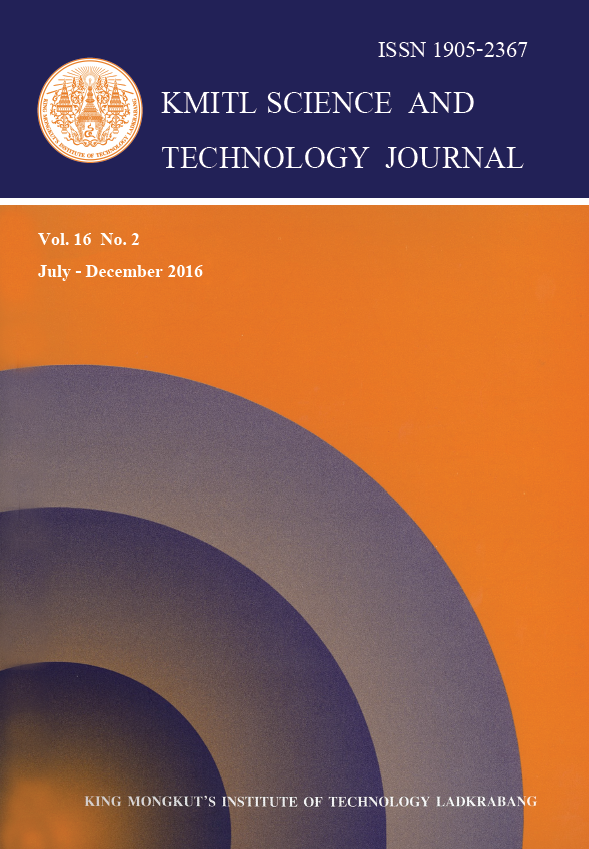In this work, the effect of oxygen plasma with varing plasma power from 100 W to 300 W on tin oxide (SnO2) nanorods prepared by glancing angle deposition (GLAD) technique was studied. The crystal structures were characterized by X-ray diffraction (XRD) technique and the morphology was characterized by field-emission scanning electron microscopy (FE-SEM) technique. Atomic-force microscopy (AFM) revealed that the as-deposited and oxygen plasma-treated tin oxide nanorod structures had orthorhombic phase of SnO2. The degree of crystallinity tended to improve as the plasma power increasd from 100 W to 300 W In addition, the surface roughness of tin oxide nanorods increased with oxygen plasma power increasing. However, the thickness decreased with oxygen plasma power increasing.
Keywords: Oxygen plasma, tin oxide nanorods, GLAD technique
*Corresponding author:
E-mail: Chaiyan.Oro@rmutr.ac.th
Oros*, C. . (2018). Effect of Oxygen Plasma on Tin Oxide Nanorods Prepared by GLAD Technique. CURRENT APPLIED SCIENCE AND TECHNOLOGY, 41-45.

https://cast.kmitl.ac.th/articles/129482